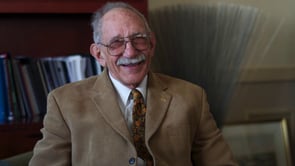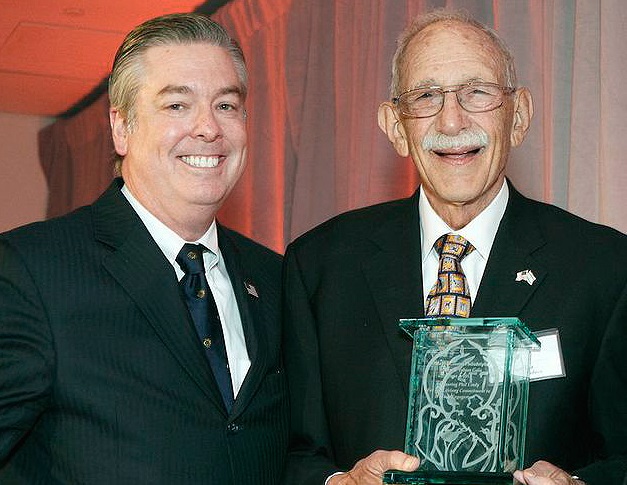Director's Vision
Why Cities?
I have been an urbanist for as long as I can remember.
One of my earliest memories is of my parents taking me to the Delaware River and the port of the City of Philadelphia in the late 1950s/early 1960s. I was younger than five years old and the sensory impact of that visit has lasted a lifetime. In my mind’s eye, I can still feel the uneven rumble of our feet over the slate grey cobblestones; the foghorn strain of the forest green tug boats guiding the larger boats towards the piers; the acrid taste of brine burning my nostrils; and the faintly menacing visage of burly longshoreman plying their craft along the seawall.
Only in retrospect have I learnt that, in my youthful lust for trying to understand the world around me, I was experiencing the last gasp of Philadelphia’s then-changing industrial waterfront – a waterfront that evolved from a glint in William Penn’s eye in 1682 into the thrumming nexus of the Workshop of the World at the end of WWII. Soon planners, such as the legendary Edmund Bacon, would seek to wipe away the built-up layers of centuries of grime and grit and replace the groaning warehouses, markets and dockyards with superhighways and a modern notion of what a 20th century urban waterfront might be.
I grew up in Philadelphia, went to school here and have had the great honor of being asked to help plan a part of her future. I was educated at the University of Pennsylvania and trained as an architect with an undergraduate degree in history. I came of age in an era when cities, and particularly Philadelphia, were struggling with the triple threat of deindustrialization, depopulation and disinvestment. And I gravitated to the field of urbanism and found both my footing and my voice in helping shape a community’s civic vision for its future through robust civic engagement.
I was fortunate to be both mentored and supported in this by folks such as Gary Hack, the dean of Penn’s Graduate School of Fine Arts, and Feather Houstoun, the president of the William Penn Foundation, who gave me a shot at leading, what turned out to be, a groundbreaking public planning process for the future of the Delaware River waterfront – that selfsame one I had so vividly first visited as a child! In 2007 we changed the course of planning history in Philadelphia and we did it by creating a civic force field against powerful special interests by forging a coalition amongst citizens, the media, academia and philanthropy to upend Philadelphia’s long-established culture of corruption and cynicism.
I came to Drexel in 2014 lured by John Fry’s vision of an engaged urban university with a moral commitment to civic engagement as an institutional imperative to the development work we are doing in the community; to how we educate our students; and to the type of the research and applied projects we participate in. I bring this same commitment to my vision for the Lindy Institute for Urban Innovation at Drexel University.
Universities occupy a privileged seat at the community table. At Lindy, we will be first and foremost about civic engagement at the service of solving some of the world’s great urban challenges. We will marry the knowledge created by our best and our brightest with the wisdom of the community and work diligently to co-forge new practices, programs and policies for our cities and our nation. We’ll work with partners around the world and bring those lessons home to Philadelphia while sharing what we’ve learned with our global partners. We will encourage and support democratic decision making in shaping an inclusive and equitable society.
I believe in an architecture of engagement – one predicated on mutual respect, co-production and shared learning. The Lindy Institute for Urban Innovation will be public-facing, accessible and transparent. We will aim to be good partners in a team of world-class actors working to ensure that the world that we leave behind is a better version of the world that we inherited.
-Harris Steinberg
Lindy Institute Background
 The Lindy Institute for Urban Innovation at Drexel University is a semi-independent interdisciplinary organization, named in honor and recognition of Philip Lindy and his family, who have donated generously to civic engagement initiatives at Drexel. Launched in 2012, the Lindy Institute provides a centralized hub for Drexel and its partners to incubate and launch innovative, effective community initiatives that build regional economic strength while promoting experiential learning, public service, and scholarly work by students, faculty, and professional staff.
The Lindy Institute for Urban Innovation at Drexel University is a semi-independent interdisciplinary organization, named in honor and recognition of Philip Lindy and his family, who have donated generously to civic engagement initiatives at Drexel. Launched in 2012, the Lindy Institute provides a centralized hub for Drexel and its partners to incubate and launch innovative, effective community initiatives that build regional economic strength while promoting experiential learning, public service, and scholarly work by students, faculty, and professional staff.
The Lindy Institute for Urban Innovation was built around a single ambitious goal – that of making Drexel University the most civically engaged university in the nation. The Lindy Institute fosters deeper support for the high-quality, experientially grounded education that Drexel offers its students and creates a stronger culture of engagement among students, faculty, and professional staff.
Prior to being recruited to Drexel to lead the Lindy Institute in 2014, executive director Harris Steinberg founded PennPraxis of the School of Design at the University of Pennsylvania. PennPraxis is the non-profit subsidiary of Penn’s design school and was created to enable faculty and student collaboration on real world projects. During his time at PennPraxis (2002-2014), his work focused on large-scale civic visioning projects in Philadelphia. Most notable was A Civic Vision for the Central Delaware (2006-2007), a public planning process that engaged more than 4,000 Philadelphians in over 200 meetings in 13-months - altering Philadelphia’s planning history and producing a vision that is now guiding development along the Delaware River.
Other signature projects that he led at PennPraxis were commissioned by Philadelphia Parks and Recreation and included Green2015: An action plan to add 500 acres of new park space in Philadelphia (2010); More Park, Less Way: An action plan to increase urban vibrancy on the Benjamin Franklin Parkway (2013); and The New Fairmount Park (2014), a vision and action plan for Philadelphia’s 2000-acre watershed park.
The Lindy Institute builds upon this work, providing new opportunities for interdisciplinary teaching and research among Drexel's faculty and creates the structure to organize and leverage the University's many assets. Lindy seeks to enhance diversity and inclusivity through civic engagement, and subsequently by attracting faculty, students, and staff who share those values. Through the Lindy Institute, we provide leadership for like-minded scholars and practitioners who share a commitment to urban development and innovation, and create a forum for the rich exchange of best practices and replicable strategies.

Drexel President John Fry with Philip Lindy,
Photo courtesy of the Jewish Exponent